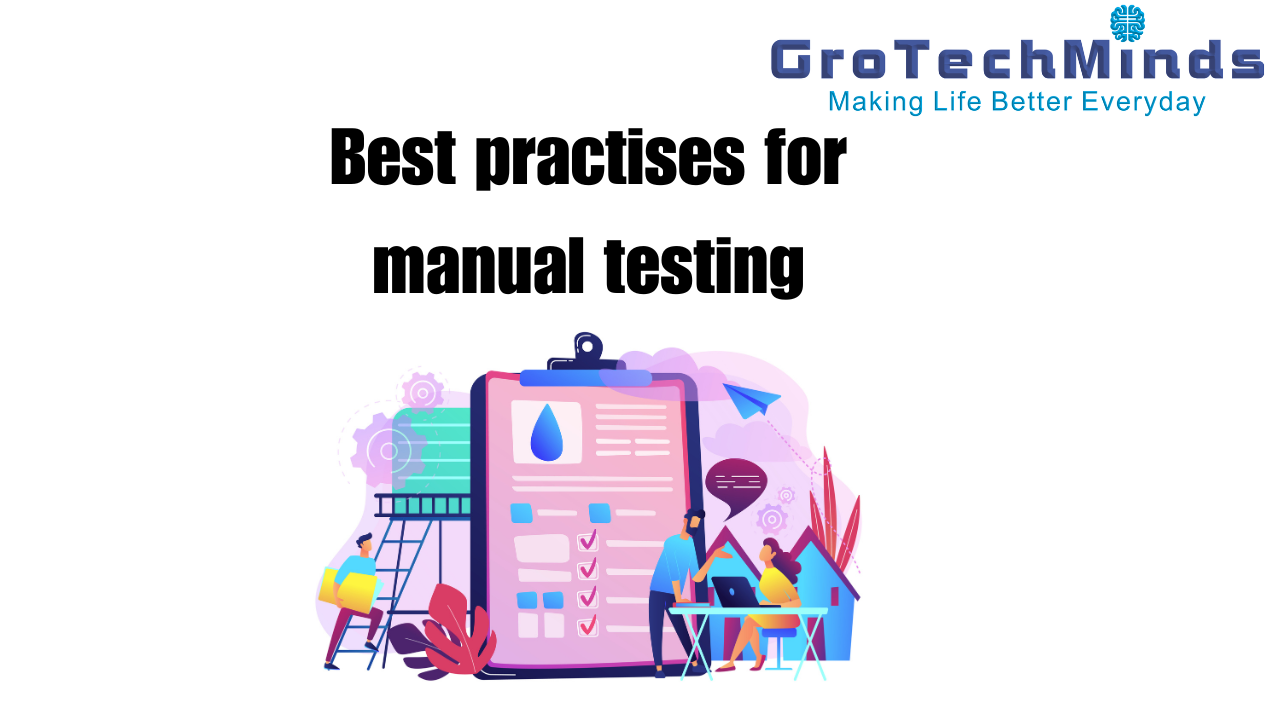Introduction :
In the always-changing field of software development, there is never a perfect user experience. Manual testing still has a human touch that cannot be replaced, even though automation testing has become essential for efficiency. By illuminating its vital function and exposing the best techniques that ensure testing success, this thorough guide seeks to demystify the art of manual testing. Come along as we explore the subtleties of manual testing and the methods and approaches that go into creating a reliable and efficient testing procedure.
Recognizing the Fundamentals of Manual Testing
Manual testing provides a practical method for validating software functionalities and is a monument to human intelligence and intuition. It entails carefully carrying out test cases without the use of automated tools, enabling testers to replicate actual user interactions and pick up on subtleties that scripted tests could miss. Gaining an understanding of manual testing is similar to getting a behind-the-scenes look at the software development process. It offers insights into various application capabilities and guarantees a comprehensive testing strategy that replicates end-user experiences.
Guidelines for Effective Manual Testing:
Careful Test Planning:
Careful test planning is the cornerstone of successful manual testing. A thorough test plan outlines the goals, parameters, and scope of the testing and acts as a roadmap. Long-term time and resource savings result from this initial effort, which also guarantees that the testing team is in sync with project objectives and expedites the testing process.
Effective Test Case Design:
Creating test cases that are precise, succinct, and well-thought-out is a skill unto itself. Every test case must have a clear objective, well-defined procedures, and anticipated results. In addition to making testing easier, well-designed test cases serve as a trustworthy gauge for monitoring test progress and spotting possible problems.
Using Experimentation in Testing:
While exploratory testing adds a dynamic dimension to your testing strategy, scripted testing offers structure. This strategy combines learning, test design, and execution all at once, which makes it a useful tool for identifying unforeseen flaws that automated testing would miss. In order to replicate the variety of user interactions, it pushes testers to be quick thinkers and investigate the program from several perspectives.
Extensive Regression Analysis
Your testing strategy should change along with the software. Regression testing on a regular basis guarantees that new modifications don’t adversely affect current functionalities. In agile development contexts, where frequent updates are the norm, this is extremely important. Manual testers help to keep software stable and reliable by methodically checking its current features.
Observing Edge Cases
When it comes to manual testing, the devil is frequently in the details. Finding and evaluating edge cases guarantees that the program operates as intended in the most adverse circumstances. Finding flaws and guaranteeing the software’s resilience in all circumstances need this procedure, which improves the software’s overall quality.
Collaborative Testing Methodology:
Dismantle the divisions that exist between testing and development by encouraging teamwork. Efficient communication among developers, testers, and other relevant parties guarantees a mutual comprehension of requirements and expedites the resolution of issues. Collaboration is more than just a catchphrase; it’s a driver of more effective testing cycles and higher software quality overall.
Detailed Reporting of Bugs:
For developers, accurate and thorough bug reporting is essential. Issue resolution is accelerated when testers find bugs and are given explicit instructions on how to recreate them. Additionally, highlighting expected versus actual results and supplying relevant photos or logs help. By strengthening the line of communication between the development and testing teams, this procedure guarantees efficient workflow and prompt resolution of issues that are found.
Ongoing Education and Development:
Testers need to stay up to date with the constantly evolving digital ecosystem. Keep up on techniques, tools, and trends in the industry. To continuously improve testing procedures in the future, actively look for ways to develop your skills and implement the lessons you’ve learned from each testing cycle. Investigating novel testing instruments or adjusting to novel testing approaches
GroTechMinds teaches manual testing:
At GroTechMinds, we understand how important manual testing is to guarantee the quality of software. We provide a thorough course on “Learn Manual Testing in Software Testing” that aims to provide prospective testers with practical knowledge and fundamental concepts. Our course covers the fundamentals of manual testing with an emphasis on practical understanding, giving students a strong foundation for navigating the challenging field of software testing. Come along on this adventure to become an expert in the field of manual testing and develop your abilities to the fullest.
In summary:
Acquiring proficiency in manual testing requires more than just learning a new skill; it also requires adopting a mentality that improves software quality as a whole. Through the integration of optimal methodologies into the testing procedure, testers transform into indispensable participants in the development process. At GroTechMinds, manual testing instruction provides a methodical and hands-on experience that equips learners to confidently and skillfully negotiate the complexities of software testing. The age-old practice of manual testing is still essential for guaranteeing software dependability and user pleasure even as the digital world changes. It’s a dedication to producing software that withstands the rigors of practical application, not merely a testing methodology.

